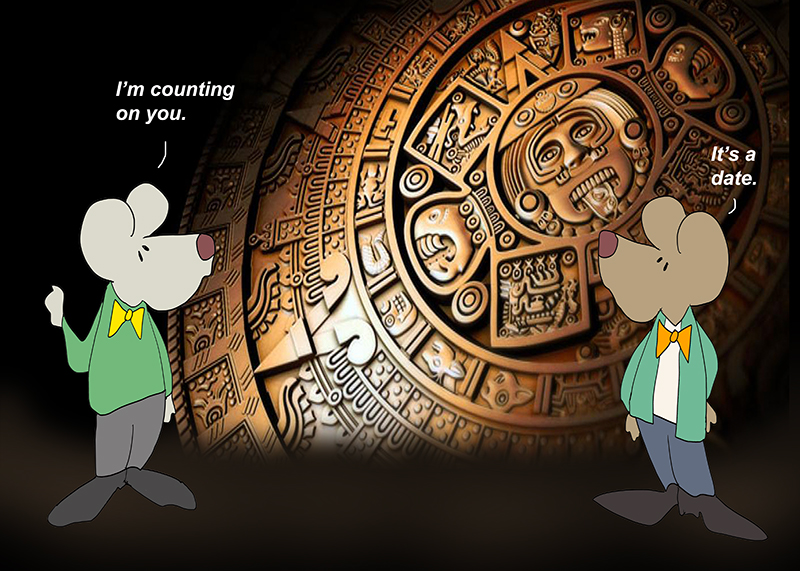We count the days. We count the days.
Monday, Tuesday, Wednesday. And on.
A week. A month. A year.
Counters, we are.
Yes, humans are aware of time. We have been. For a long time.
Surely, the earliest humans noticed the cycles between light and dark, wake and sleep. So they started making marks on trees or placing rocks in the dirt to keep track.
The oldest calendar — at least that has been discovered — is over 10,000 years old. Archaeologists were working in Scotland when they found the thing back in 2013. It is believed to be the world’s oldest lunar calendar.
It was a series of 12 large pits. The pits all had special shapes and were designed to mimic the various phases of the moon. And during the midwinter solstice, those pits aligned perfectly. It showed how the hunter-gathers of that time kept time — an accurate method to track the passage of the seasons and the lunar cycle.
These curious lunar-cycle-marking pits in Aberdeenshire are by far the oldest “calendar” ever discovered. This pre-dates — by several thousand years — the Bronze Age time monuments in Mesopotamia. Until this discovery, those in Mesopotamia were the oldest.
And then, on the other side of the world, lived the Mayan people. We are all familiar with their calendar, mainly because the media picked up that the calendar was ending on December 21, 2012. It was all the buzz. They called it doomsday. Of course, the world did not come to an end as the media suggested.
And here we are. That Mayan calendar began on this date, August 13, 3114.
The long-count calendar — which spanned roughly 5,125 years — did, in fact, reach its end of a cycle on December 21, 2012.
I read about and tried to understand the Mayan calendar, but the names of time segments made it difficult for me to keep track. Anyway, that 2012 date brought to a close the 13th Bak’tun — an almost 400-year period in the Mayan way of counting.
But from what I understand, it didn’t signal the end of time. It was rather more like a reset on their time-keeping system. Sort of like the way a 1960s automobile would click over at mile 99,999.9 and reset to zero. Or, how our computers didn’t have that next digit, to flip us over from 1999 to 2000. It had to reset. Same with the Mayan calendar.
There has been a myriad of calendars throughout history, all around the world. Civilizations were sequestered from one another long, long ago. So everyone had a time-keeping method, based on the comings and goings of the sun and the moon.
Now we use the Gregorian calendar on a worldwide basis for secular purposes. But there are all sorts of medieval or ancient calendars still in use today. Various regions use them for religious or social purposes, including the Julian calendar, the Hebrew calendar, the Islamic calendar, various Hindu calendars, the Zoroastrian calendar, and on and on it goes.
We count the days. We count the days.
Speaking of the end of time, I should also note. It was on this date, August 13, 1889, that William Gray of Hartford, Connecticut, patented the coin-operated telephone. Oh, how we used to drop a dime. But those days are long gone, and now the coin-op telephone has all but disappeared. End of days.
This is the operator. Your call is about to end. Insert another 25 cents to continue.
============
Don’t worry about the world coming to an end today. It is already tomorrow in Australia.
— Charles M. Schulz
============
Time flies over us, but leaves its shadow behind.
— Nathaniel Hawthorne
=============
Better three hours too soon than a minute too late.
— William Shakespeare
============
Keeping track of time, we do, we do.
